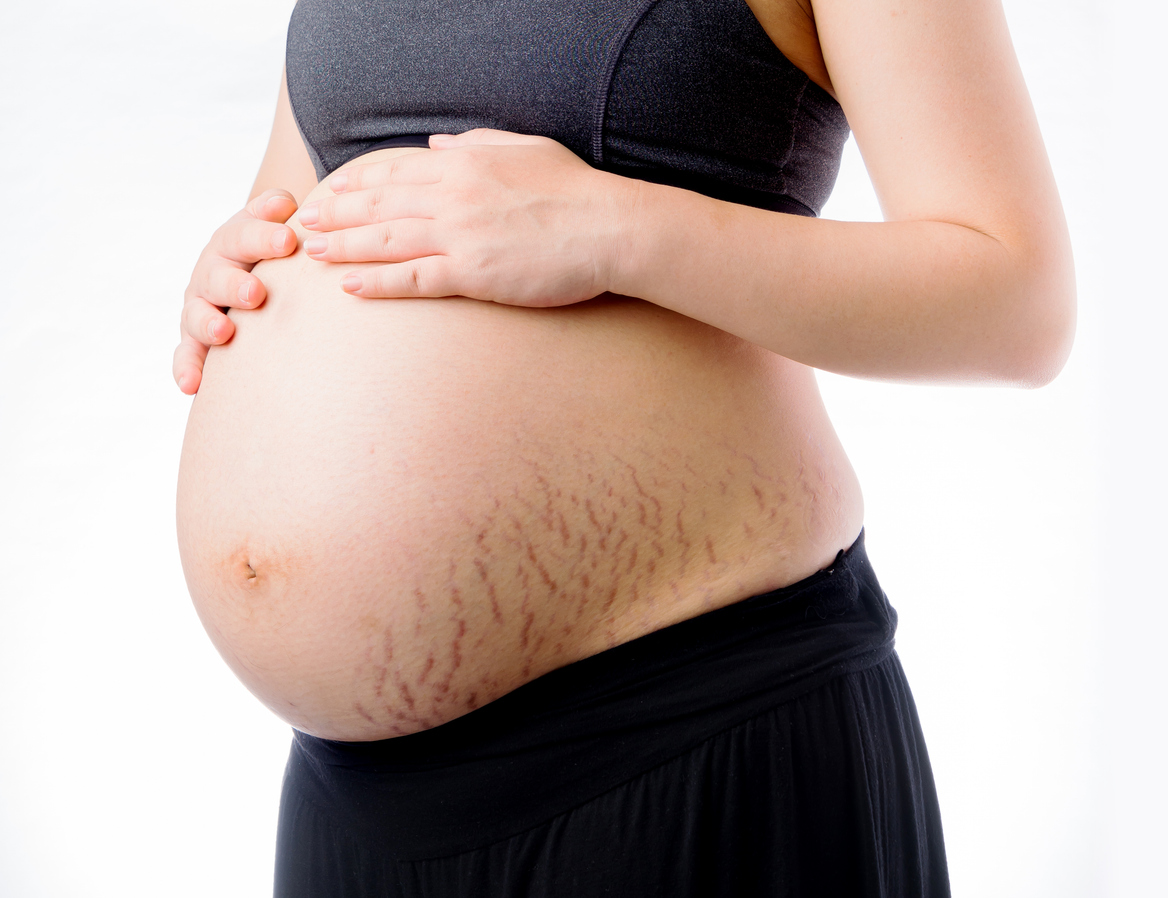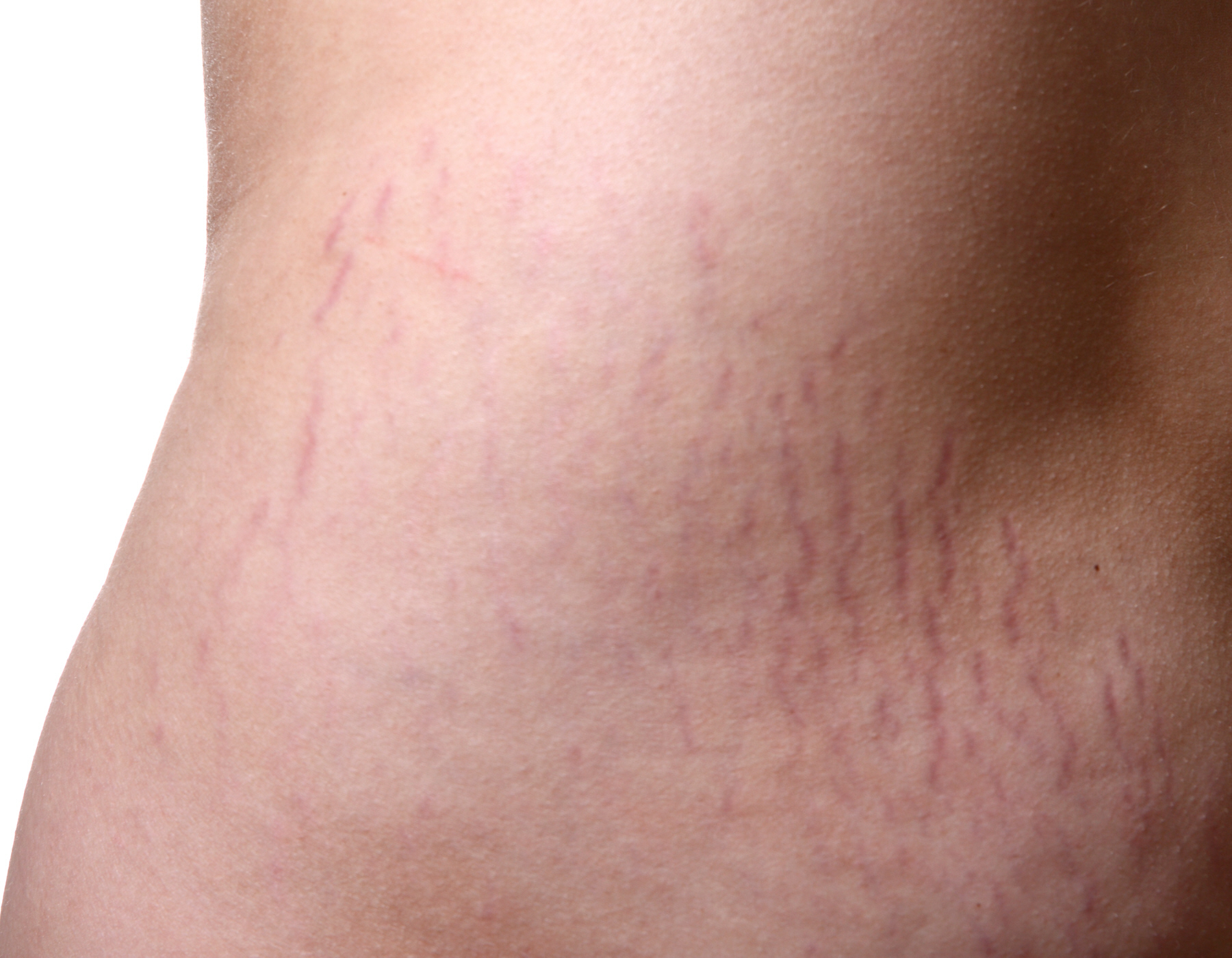
Stretch marks, or striae, are a common skin condition characterised by long, narrow streaks or lines that appear on the skin. They often develop when the skin stretches or shrinks too quickly, leading to the tearing of the dermis. Stretch marks are most commonly seen on areas such as the abdomen, thighs, hips, and breasts, especially after pregnancy, rapid growth, or significant weight changes. While they are harmless, they can cause concern for those looking to improve the appearance of their skin. Treatment focuses on minimizing their appearance with laser therapy and micro-needling to promote collagen production and improve skin texture.
Stretch marks form when the skin is stretched beyond its capacity, causing the middle layer (dermis) to tear and resulting in red, purple, or white streaks on the surface. Over time, these marks may fade but rarely disappear completely. The loss of collagen and elastin fibers during this rapid stretching or shrinking process disrupts the skin’s structure, leading to visible scars. Early intervention with collagen-boosting treatments can help improve the appearance of stretch marks and encourage skin healing.

(Available on Excel V and Excel V Plus)
Best for
Mild cases or isolated vessels.
How It Works
The long-pulse Nd:YAG laser emits energy at a wavelength absorbed by haemoglobin in blood vessels. This heat causes the targeted vessels to collapse, effectively treating both surface red veins and deeper blue veins.
Results
Treated vessels may disappear immediately or gradually fade over several weeks.
(Candela VBeam Perfecta, Excel V, Excel V Plus, Sciton BBL)
Best for
More severe cases or large areas of visible facial veins and redness, particularly in rosacea.
How It Works
This approach layers multiple vascular-targeting technologies in one session, including:
Results
Effectively reduces visible veins, diffuse redness, and facial flushing commonly seen in rosacea.
(Candela VBeam Perfecta, Excel V, Excel V Plus, Sciton BBL)
Best for
Stimulating collagen and vascular remodelling to reduce persistent skin redness.
How It Works
Often recommended in combination with vascular laser or BBL treatments to enhance skin healing, texture, and redness reduction.

While treatments can significantly improve their appearance, stretch marks cannot be completely removed. They can, however, become much less noticeable with the right procedures.

Yes, stretch marks often fade from red or purple to white or silver over time. However, treatments can expedite and enhance this process.

Effective treatments include laser therapy, micro-needling, and topical retinoids. The choice depends on the type, age, and severity of the stretch marks.

Laser treatments use light energy to stimulate collagen and elastin production, improving skin texture and reducing the visibility of stretch marks.

New stretch marks are red or purple due to blood vessels being visible, and they respond better to treatments like Pulsed Dye Laser (PDL). Older, white stretch marks are harder to treat and often require fractional or ablative laser therapy to rebuild collagen.

Most patients require 4–6 sessions spaced a six weeks apart, but the number of sessions depends on the treatment type and the severity of the stretch marks.
It is important to remember that results vary by treatment type and individual. Improvement in texture and colour is usually visible after a few sessions, with optimal results appearing over several months as collagen rebuilds.

Common side effects include redness, swelling, or mild irritation, which typically resolve within a few days. Rarely, pigmentation changes or scarring may occur.